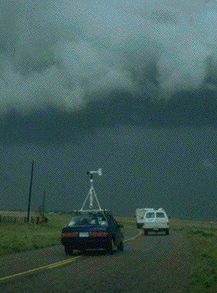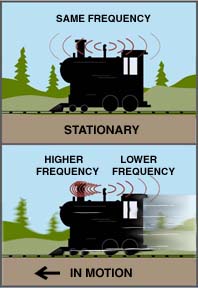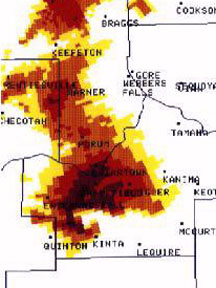Hot-air balloons float because the air inside the balloon is less dense than the outside air.
Click on image for full size
Windows to the Universe original image
Energy Density
A tornado is the most intense force in nature. That doesn't mean it's
the most powerful. In fact, a thunderstorm can be 40,000 times more
powerful than a tornado. Then why aren't thunderstorms as dangerous as
tornadoes? The answer lies in each storm's
energy
density.
A tornado may not have nearly as much energy as a thunderstorm, but the
energy in the tornado is concentrated into a much smaller area. Imagine
you have a hose and are watering a yard. You can spray five gallons of
water over the whole yard and not really notice it. If you were to spray
a couple gallons in one small section, you would probably flood and
possibly start to erode it. That's because the water was very
concentrated, like the energy in a tornado.
You might also be interested in:

How did life evolve on Earth? The answer to this question can help us understand our past and prepare for our future. Although evolution provides credible and reliable answers, polls show that many people turn away from science, seeking other explanations with which they are more comfortable.
...more
Tornadoes form from severe thunderstorms. They have a very high energy density which means that they affect a small area but are very destructive to that area. They also don't last very long which makes
...more
Sound travels in waves. You hear sound because waves hit your ear. Sound waves are similar to ocean waves. They both have a certain frequency. The frequency is measured in hertz, which is one cycle per
...more
Storm chasers are different than storm spotters. Chasers travel around Tornado Alley looking for severe storms and tornadoes. This area in the Great Plains is the best for chasing because of the frequency
...more
A tornado is the most intense force in nature. That doesn't mean it's the most powerful. In fact, a thunderstorm can be 40,000 times more powerful than a tornado. Then why aren't thunderstorms as dangerous
...more
The Doppler effect was named after Christian Doppler, who first came up with the idea in 1842. He learned that sound waves would have a higher frequency if the source was moving toward the observer and
...more
It's hard to forecast tornadoes. They don't last very long and are also very complicated. Scientists don't really know how they form, but they do where they tend to form. Using what they know about the
...more
Has someone ever told you to open your windows during a tornado? Or has someone ever told you that you don't have to worry about tornadoes because the place where you live is protected? These are two of
...more









